
Laura Mitchell
About the Author
Laura Mitchell is a numismatics enthusiast and coin history writer from Ohio. She has a background in archival research and a passion for American currency. Laura wants to help collectors, especially beginners, understand how to identify rare varieties, and how to see if a coin is worth money. Laura has knowledge and a practical, reader-friendly style. She tries to make even complex topics like the coin grading chart and rare pennies easy to grasp.
Connect with Laura Mitchell



Introduction
Circulated coins with rare errors or limited mintages are more exciting than pristine proofs. These are the coins that are worth money because of history, rarity, and human error. Such pieces passed through countless hands before discovery unnoticed, and they might already be in your possession. This guide will help you learn how to know if a coin is worth money, and why some of the most unsuspecting pieces can be shockingly valuable.
TOP 10 Most Valuable Circulated Coins
1916-D Mercury Dime
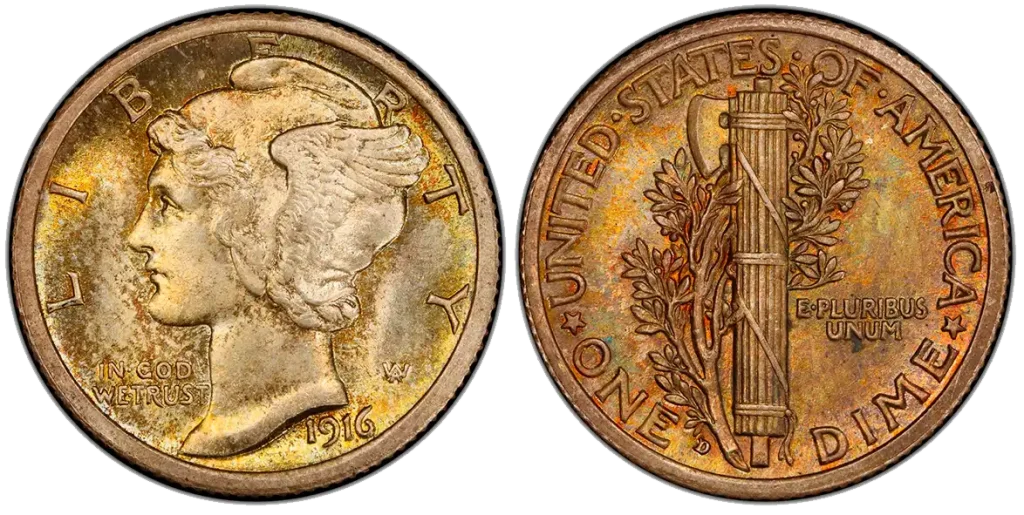
The 1916-D Mercury Dime is a textbook example of a circulated coin worth money. With just 264,000 mints in Denver, it’s a rare piece in a collection. Even well-worn examples trade for over $1,000. If you’re asking what coin years are worth money, 1916-D is at the top of the list.
| Why Valuable | Only 264,000 minted |
| Estimated Value | $1,000+ (even in poor) |
| Mint | Denver |
| Metal | 90% Silver, 10% Copper |
| Designer | Adolph A. Weinman |
| Weight | 2.50 g |
| Diameter | 17.90 mm |
| Edge | Reeded |
1943 Copper Penny

Arguably what coin is worth the most money in everyday change, the 1943 Copper Penny is a legendary minting mistake. It’s created during a year when pennies were supposed to be steel, so this error turned into one of the rarest U.S. coins. Only around 20 are known to exist. It’s one of the most talked-about coin errors worth money, and a reminder to weigh them and know what should and shouldn’t exist.
| Why Valuable | Accidentally struck in copper |
| Estimated Value | $100,000+ (only ~20) |
| Mint | Philadelphia etc. |
| Metal | 95% Copper, 5% Tin & Zinc |
| Designer | Victor D. Brenner |
| Weight | 3.11 g |
| Diameter | 19 mm |
| Edge | Smooth |
1970-S Small Date Lincoln Penny

This piece has a high “7” in the date and a thinner font than its common sibling. It’s part of any updated grading chart enthusiasts follow closely. Because it’s so easy to overlook, many coins are still undiscovered. The answer often lies in small details like these.
| Why Valuable | Rare small date variety with high ‘7’ |
| Estimated Value | $5,000+ (MS grade) |
| Mint | San Francisco |
| Metal | 95% Copper, 5% Zinc |
| Designer | Brenner / Gasparro |
| Weight | 3.11 g |
| Diameter | 19 mm |
| Edge | Plain |
2004-D Wisconsin Extra Leaf Quarter
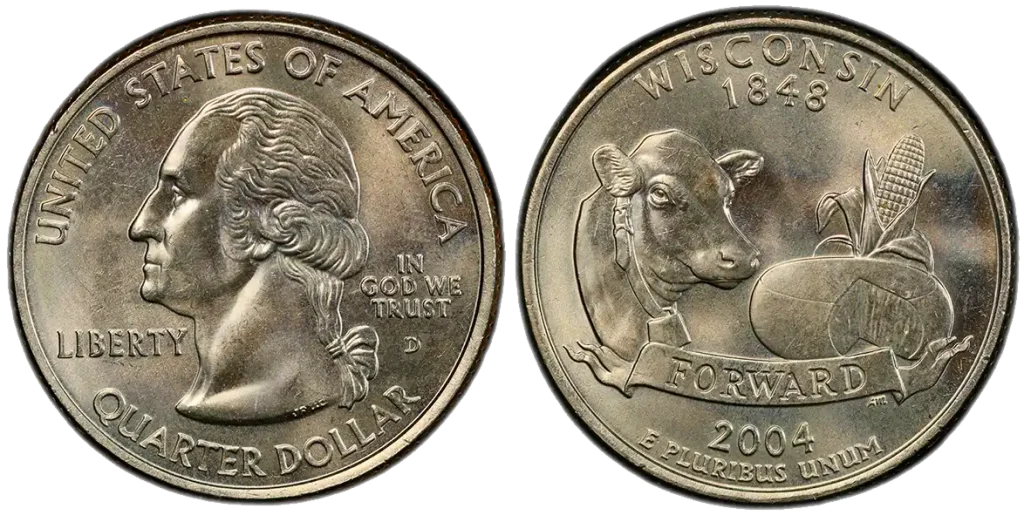
Sometimes a coin that are worth money is created by accident. The 2004-D Wisconsin Extra Leaf Quarter is an example of that. The added leaf was likely a die gouge or intentional modification. Either way, it made headlines.
| Why Valuable | Mint error with extra corn leaf |
| Estimated Value | $50–$300 |
| Mint | Denver |
| Metal | 75% Copper, 25% Ni |
| Designer | John Flanagan / Maletsky |
| Weight | 5.67 g |
| Diameter | 24.30 mm |
| Edge | Reeded |
1982 No Mintmark Roosevelt Dime

In 1982, dimes from Philadelphia were supposed to have a “P” mintmark, but some escaped the mint without it. If you’re sorting your collection, check the 1982 dime.
| Why Valuable | Philadelphia mint error |
| Estimated Value | $200+ |
| Mint | Philadelphia |
| Metal | 75% Copper, 25% Ni over copper core |
| Designer | John R. Sinnock |
| Weight | 2.27 g |
| Diameter | 17.90 mm |
| Edge | Reeded |
1999-P Wide AM Lincoln Penny
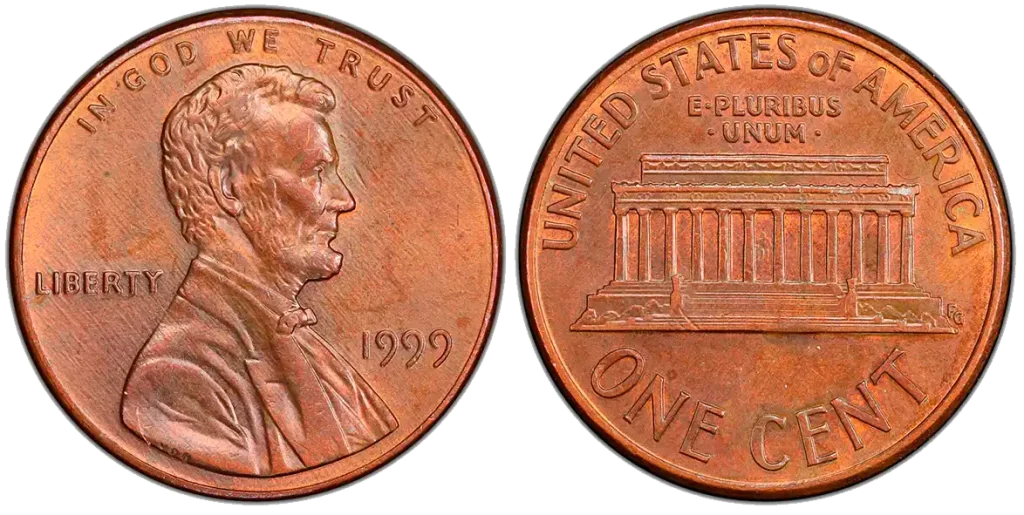
A small spacing can be worth a lot. The 1999-P Wide AM Penny uses a proof reverse die; it created a gap in “AMERICA.”
| Why Valuable | Wide spacing in ‘AMERICA’ |
| Estimated Value | $50–$500 |
| Mint | Philadelphia |
| Metal | Copper-plated Zn |
| Designer | Brenner / Gasparro |
| Weight | 2.50 g |
| Diameter | 19.00 mm |
| Edge | Plain |
1969-S Doubled Die Lincoln Penny
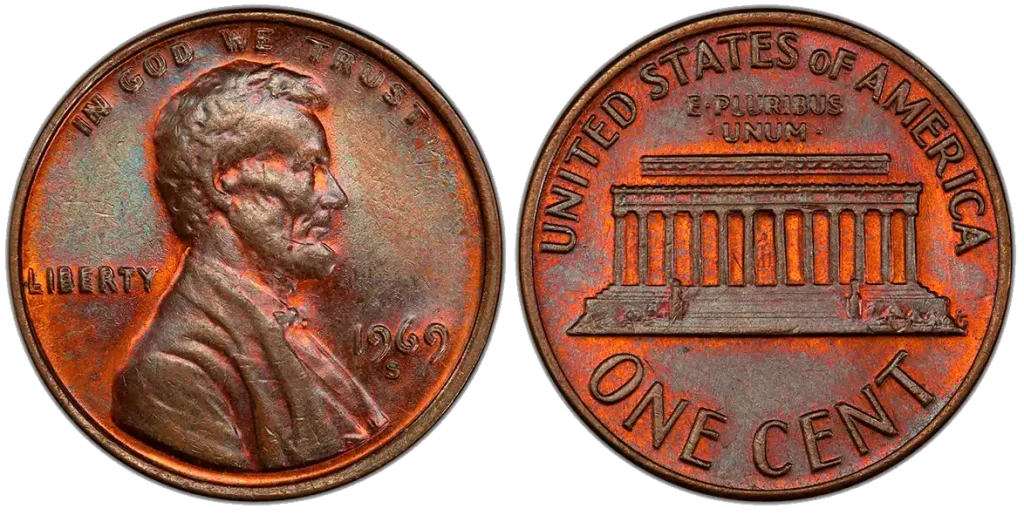
This coin is often found in every list of grading charts. The doubling in the motto and date is visible without magnification. While rare, these have been found in circulation and change jars.
| Why Valuable | Obvious doubling on front |
| Estimated Value | $25,000+ (MS grade) |
| Mint | San Francisco |
| Metal | 95% Copper, 5% Zinc |
| Designer | Brenner / Gasparro |
| Weight | 3.11 g |
| Diameter | 19 mm |
| Edge | Plain |
1955 Doubled Die Lincoln Penny
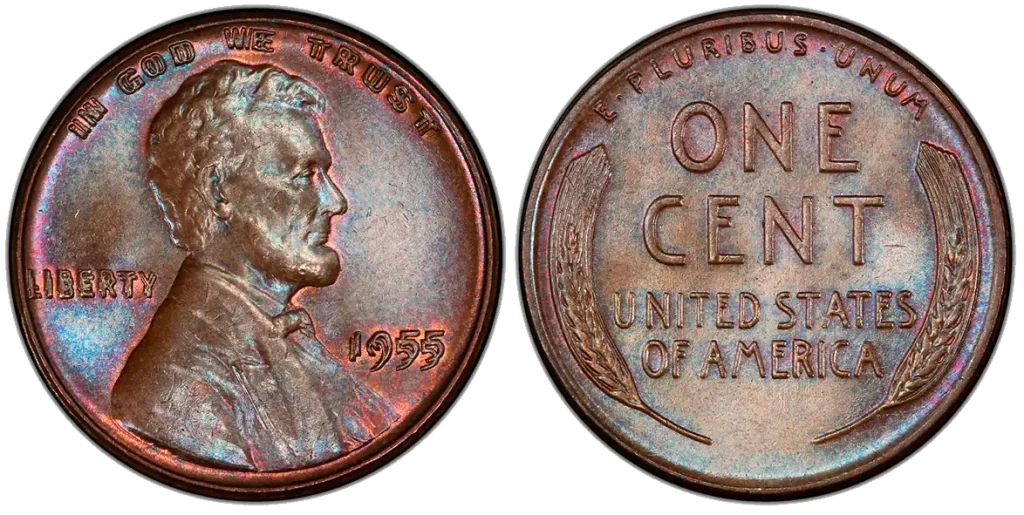
This is one of the most famous doubled dies ever. The 1955 Doubled Die Lincoln is instantly recognizable due to its extreme text doubling. Even in beat-up condition, it can be worth four figures.
| Why Valuable | Strong doubling on obverse |
| Estimated Value | $1,000+ (even worn) |
| Mint | Philadelphia |
| Metal | 95% Copper, 5% Tin & Zn |
| Designer | Victor D. Brenner |
| Weight | 3.11 g |
| Diameter | 19 mm |
| Edge | Plain |
1983-P Washington Quarter (DDR)
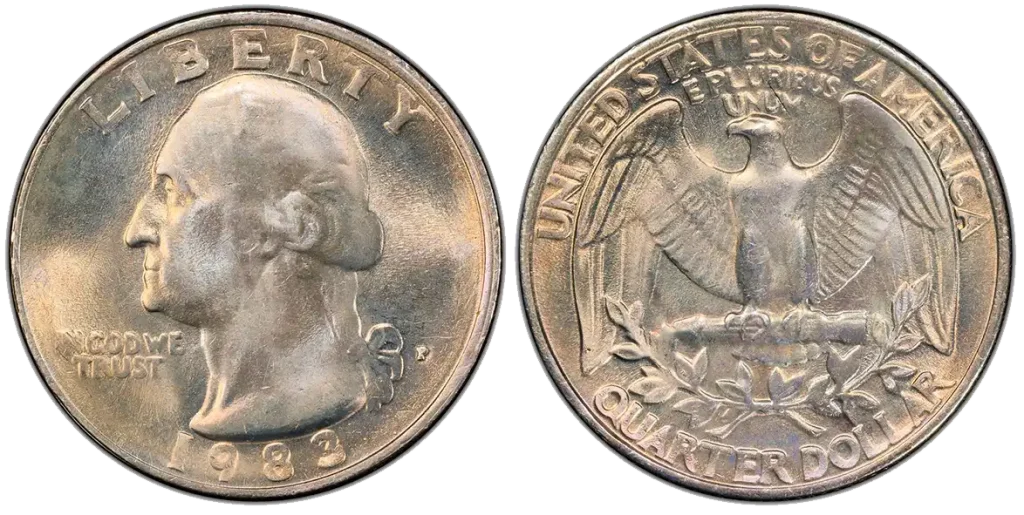
The doubling on this quarter is more subtle but still collectible. Look closely at the eagle’s feathers and lettering.
| Why Valuable | Doubled die reverse |
| Estimated Value | $150+ |
| Mint | Philadelphia |
| Metal | 75% Copper, 25% Ni over core |
| Designer | John Flanagan |
| Weight | 5.67 g |
| Diameter | 24.30 mm |
| Edge | Reeded |
2019-W and 2020-W Quarters
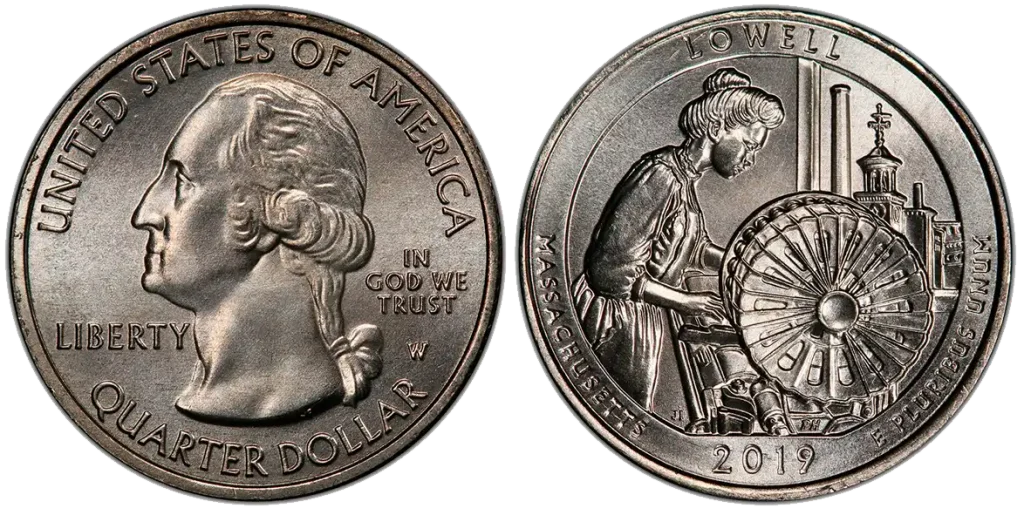
A modern rarity, these quarters were intentionally released into circulation to reignite interest in coin collecting. If you’re wondering how to see if a coin is worth money in your pocket today, look for the tiny “W” on these.
| Why Valuable | Limited West Point mintages |
| Estimated Value | $15–$50 each |
| Mint | West Point |
| Metal | 75% Copper, 25% Nickel |
| Designer | Flanagan / Iskowitz |
| Weight | 5.67 g |
| Diameter | 24.30 mm |
| Edge | Reeded |
TOP 5 Most Valuable Silver Coins
These silver coins prove that high metal content plus rarity equals serious value. Many of them are also a good starting point for people asking what coin is worth the most money from older collections.
1932-D Washington Quarter

A low mintage and being the first year of issue make the 1932-D Washington Quarter a coin worth money. Silver content plus a Denver mint mark puts it on most collector’s’ radar. The 1932-D Washington Quarter is highly sought after by collectors. This was the first year of the Washington quarter, and coins from the Denver Mint are notably harder to find in good condition.
| PCGS # | 5791 |
| Designer | John Flanagan |
| Diameter | 24.30 mm |
| Weight | 6.30 grams |
| Mint | Denver |
| Edge | Reeded |
| Metal | 90% Silver, 10% Copper |
| Mintage | 436,800 |
| Auction Record | $143,750 (PCGS MS66, 2008) |
1916 Standing Liberty Quarter (Full Head)
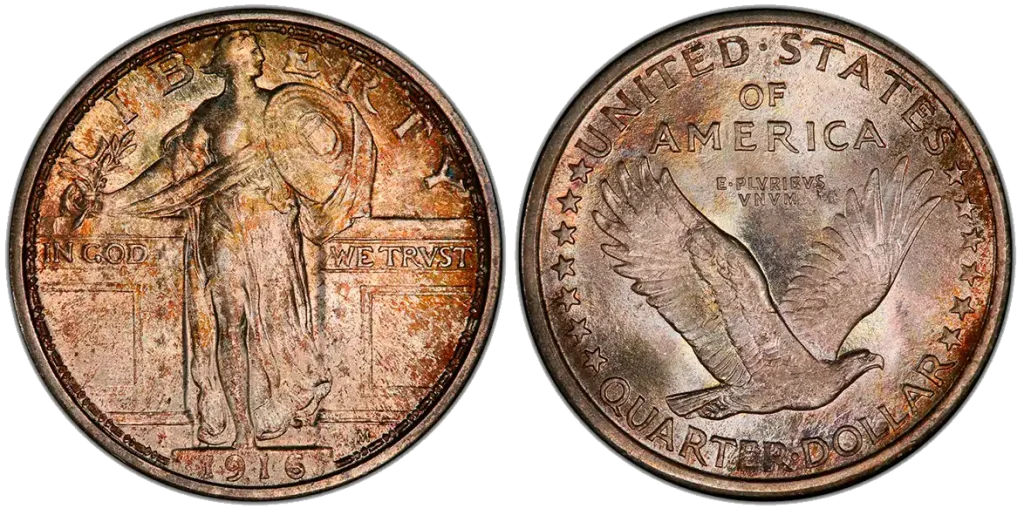
When looking at coin grading charts of rare pennies worth money, you’ll often come across this quarter in discussions too. The “Full Head” version of the 1916 Standing Liberty Quarter is rare because of low mintage. With fewer than 55,000 ever made, you can be lucky to own it.
| PCGS # | 5704 |
| Designer | Hermon A. Mac Neil |
| Diameter | 24.30 mm |
| Weight | 6.30 grams |
| Mint | Philadelphia |
| Edge | Reeded |
| Metal | 90% Silver, 10% Copper |
| Mintage | 52,000 |
| Auction Record | $48,300 (PCGS MS67, 2005) |
1893-S Morgan Silver Dollar

The 1893-S Morgan Dollar is a dream coin and a perfect example of what coin is worth the most money in the Morgan series. Even in low grades, it’s valuable because of its limited mintage of 100,000. High-grade versions can command six-figure sums at auction.
| PCGS # | 7226 |
| Designer | George T. Morgan |
| Diameter | 38.10 mm |
| Weight | 26.73 grams |
| Mint | San Francisco |
| Edge | Reeded |
| Metal | 90% Silver, 10% Copper |
| Mintage | 100,000 |
| Auction Record | $735,000 (PCGS MS65, 2018) |
1878-CC Morgan Silver Dollar
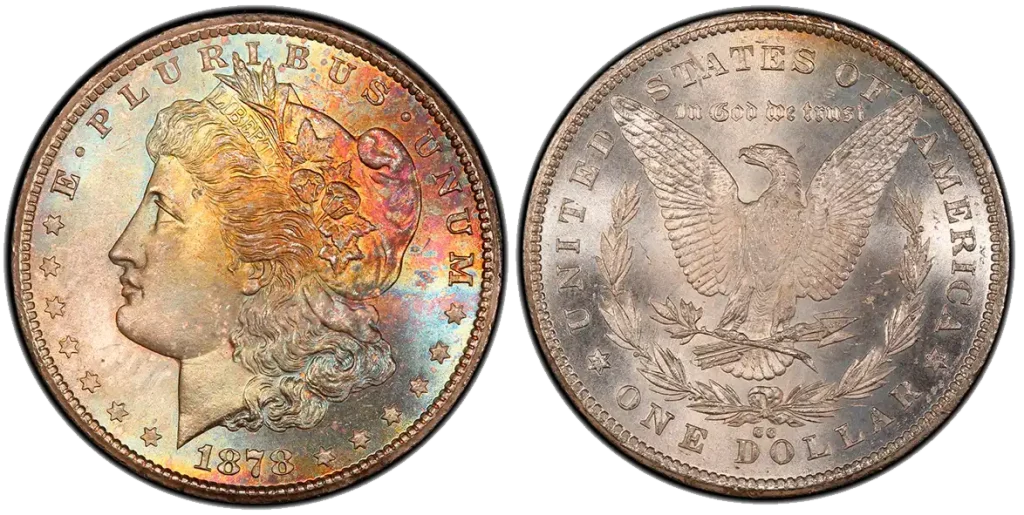
As the first Morgan from this mint, it’s still in strong demand. The 1878-CC is a key Carson City issue and represents the first year of the Morgan dollar. Its mintage is higher than some rarer dates,but Carson City coins are always popular, and uncirculated examples with strong luster are highly desirable.
| PCGS # | 7080 |
| Designer | George T. Morgan |
| Diameter | 38.10 mm |
| Weight | 26.73 grams |
| Mint | Carson City |
| Edge | Reeded |
| Metal | 90% Silver, 10% Copper |
| Mintage | 2,212,000 |
| Auction Record | $34,500 (PCGS MS67, 2009) |
1964 Kennedy Half Dollar (Accented Hair)
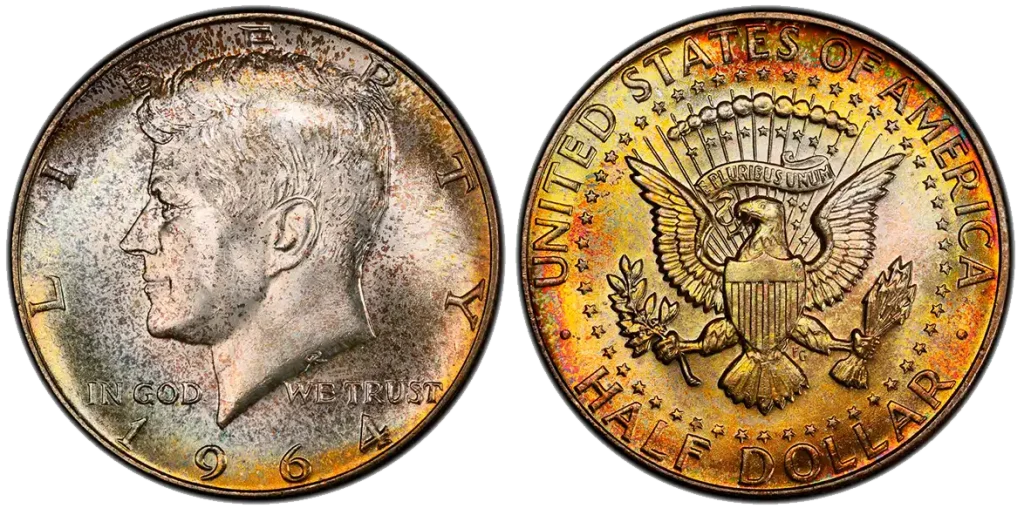
The “Accented Hair” variety was used briefly and only in proof sets. Many new collectors miss it, but once you learn how to know if a coin is worth money, you’ll understand why tiny design changes make a big difference.
| PCGS # | 6706 |
| Designer | Roberts / Frank Gasparro |
| Diameter | 31.00 mm |
| Weight | 12.50 grams |
| Mint | Philadelphia |
| Edge | Reeded |
| Metal | 90% Silver, 10% Copper |
| Mintage | 273,304,004 (proof subset unknown) |
| Auction Record | $9,400 (PCGS MS67+, 2016) |
How to Check Your Coins
If you’ve just inherited an old coin jar or started digging through a forgotten drawer, it can be tough to know where to begin.So how do you know if you’ve got a coin worth money? Here’s a simple process to follow if you’re trying to figure it out for yourself.
- Start with the dates, ask yourself: what coin years are worth money? As a rule of thumb, anything minted before 1965 is worth a second look, especially if it’s a dime, quarter, or half dollar. Coins from those years often contain 90% silver, and even heavily circulated ones can be worth well above face value based on metal content alone.
- Next, check for mintmarks, you’ll usually find a small letter stamped on the front or back, depending on the year and type. Coins made at less common mints, like San Francisco (S), Denver (D), Carson City (CC), or West Point (W), sometimes carry a premium simply because fewer of them were produced.
- Then, look for errors, doubled lettering, off-center designs, or missing mint marks. Some of the most valuable U.S. coins, like the 1955 Doubled Die penny or the 1982 No Mint Mark dime, were just regular coins that happened to be struck with flaws. Keep an eye out for anything that looks unusual, especially around the text or date.
- Condition is also important, even common coins can become desirable if they’ve been well-preserved. A coin that shows no obvious signs of wear might be considered “uncirculated” and could qualify for a higher grade. And with higher grades often comes higher prices. Compare them to images on a trusted coin grading chart, it can help you make a more accurate call.
- Don’t forget to weigh them, if you suspect it might be silver, pull out a scale. For example, a genuine 1964 silver quarter weighs about 6.25 grams, while a modern clad version only weighs 5.67 grams. That slight difference is a quick way to separate silver from newer alloys.
- Finally, keep reference tools close, a good coin grading chart for rare pennies worth money can walk you through what to look for, especially if you’re trying to assess the smallest differences between grades.
The truth is, you don’t need to be an expert to figure out what coin is worth the most money in your collection. Just have a careful eye and a little patience, and you might be surprised by what’s hiding in plain sight.
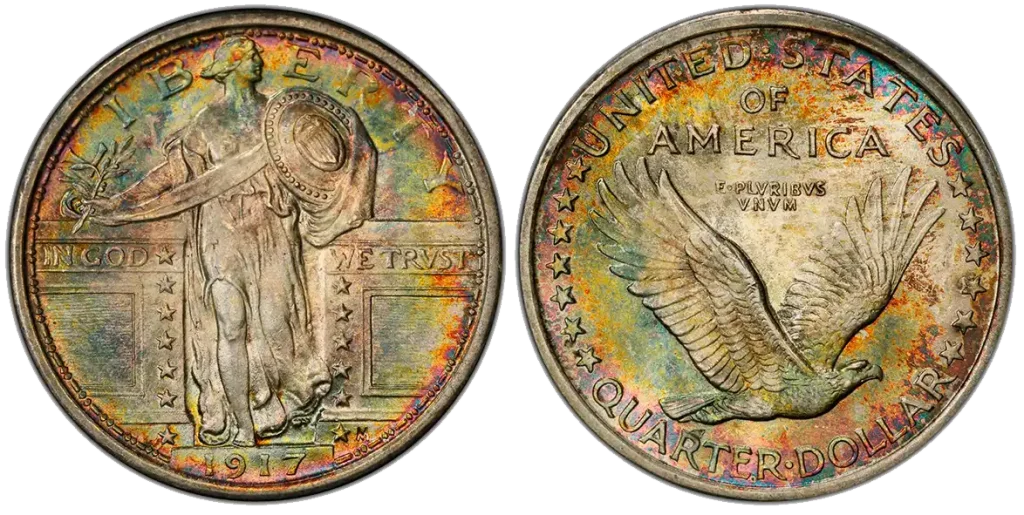
FAQ: Common Questions About Valuable Coins
How can I tell if my coin is silver?
In the U.S., most dimes, quarters, and half dollars minted before 1965 contain 90% silver. These coins also weigh slightly more than their modern versions. A silver coin will also make a distinct “ringing” sound when dropped gently on a hard surface. For certainty, you can weigh the coin or test it with a magnet (silver isn’t magnetic).
Where is the mintmark located?
The mintmark is a small letter that tells you where the coin was struck. Its location varies:
- On Lincoln cents, look just below the date on the obverse.
- On quarters and dimes, it’s usually on the obverse near Washington’s ponytail (post-1968) or under the eagle on the reverse (pre-1965).
- Common mintmarks: D (Denver), S (San Francisco), P (Philadelphia – sometimes omitted), CC (Carson City), O (New Orleans), W (West Point).
What are the most valuable penny errors?
Some famous penny errors:
- 1955 Doubled Die Lincoln Cent: noticeable doubling in the lettering.
- 1969-S Doubled Die: sharp doubling on “LIBERTY” and “IN GOD WE TRUST.”
- 1970-S Small Date: hard to find and highly collectible.
- 1999 Wide AM: spacing between the A and M in “AMERICA” on the reverse.
- 1943 Copper Penny: an extremely rare error where pennies were struck in copper instead of steel.
Are bicentennial quarters worth anything?
1976 Bicentennial quarters (dated 1776–1976) are common in circulation and usually worth face value unless in uncirculated or silver-proof condition. Special 40% silver versions, sold in collector sets, can be worth several dollars depending on condition and market demand.
How do I sell my rare coins?
You can sell coins through:
- Reputable coin dealers (local or online)
- Auction houses like Heritage Auctions or Stack’s Bowers
- eBay (be sure to include quality photos and grading info)
- Coin shows, where many buyers and appraisers are present
Before selling, get your coin professionally graded and appraised, which can boost buyer trust and final sale price.
What’s the rarest coin in circulation today?
Most truly rare coins have been removed from circulation, error coins like the 1982 No Mint Mark Dime, 1999 Wide AM penny, or 2020-W quarters are still found from time to time. The 1943 copper penny, if ever discovered in change, would be among the rarest.
Where can I get my coins appraised?
Start with:
- Professional Coin Grading Services (PCGS or NGC)
- Local coin dealers or shops
- Numismatic events and coin shows
- Online appraisal services (use caution and check reputation)
- Look for appraisers who are members of recognized organizations like the American Numismatic Association (ANA).